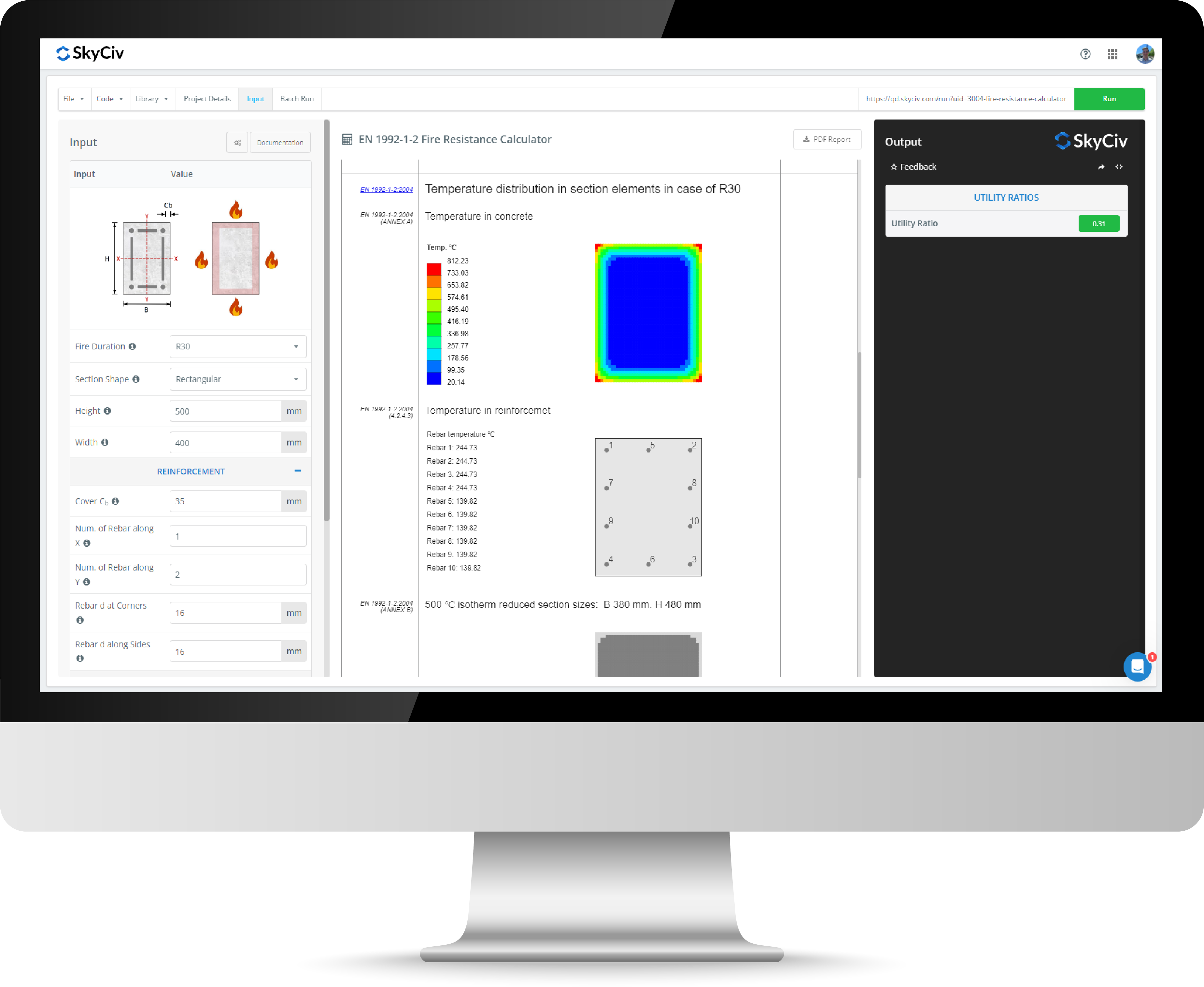C Channel Load Capacity Calculator
SkyCiv C Channel Load Capacity Calculator is a free tool designed to help you determine the strength and capacity of steel channel beams. This calculator is based on the AISC 360-16 steel design standard. It calculates the capacity of a channel and angle section based on the dimensions, span length and design loads you enter.
C Channel Load Capacity Calculator designs structural members subjected to bending, shear and axial loads in both major and minor axis. These members are typically used as C beams or C Channel columns in a structure. The calculator offers a user-friendly input panel where you can easily enter data for geometry, material, design actions and design factors. It then provide results for both combined and regular member utilization.
About the AISC 360 C Channel Load Capacity Calculator
What is a C Channel Section?
A C Channel section is shaped like the letter "C." These channel sections are usually made of hot rolled steel, consisting of two flanges connected to a web to form the channel shape.
Most standard channel sizes have the same top and bottom flange thickness. These channels can also have a fillet radius in the joints between the flange and the web to strengthen the joint and help it withstand higher stress concentrations.
Where are C Channel Sections commonly used?
Similar to I-beams and Angle sections, the Channel section is used in many structural engineering contexts. These beams are often chosen over I-beams due to cost, material, weight and fabrication advantages. Channels are also preferred when bi-directional support is required or certain orientation needs to occur in the installation to meet architectural designs.
What is C Channel load capacity?
The channel load capacity is the total load that a section can withstand based on certain factors. This is calculated by following a specific standard, for example AISC 360-16. Load capacity can be broken down into capacity for different loads and directions. This can include capacity for axial (strong and weak axis), compression, tension and bending forces.
There are multiple factors influence the steel C channel load calculation, including material, dimensions, span length. The loading conditions and orientation (shear, axial and bending loads) play a vital role in determining if the beam load capacity is safe. The C channel load capacity calculator also supports design for local buckling and lateral torsional buckling with design factors such as shear lag factor, effective length parameters and torsional factor.
The SkyCiv C Channel Capacity Calculator supports both Allowable Stress Design (ASD) and Load and Resistance Factor Design (LRFD) design methods as per AISC 360-16. The difference between the two design philosophies is that ASD relies on allowable stresses and laid factors to determine design loads while LRFD incorporates load and resistance factors to create a more consistent approach to calculate factored loads.
Angle Capacity Calculator
The above calculator also supports the design of angle beam load capacity. To access this version of the calculator use the Related dropdown at the top of the left side input panel. An angle section consists of two legs, joining together at a right angle. Equal angle sections are when both legs are of the same width. These are commonly used in structures for support and bracing. Like the channel calculator the angle beam capacity calculator supports both ASD and LRFD design with multiple restraint case types available.
To get load capacity for an angle section use the above SkyCiv Angle Capacity Calculator designed to AISC 360. This follows a similar process to channel beam design, however with factors considered for an angle section. To access this tool use the “Related” drop-down above the top left input panel.
Related Tools
About SkyCiv
SkyCiv offers a wide range of 3D Structural Analysis Software for engineers. As a constantly evolving tech company, we're committed to innovating and challenging existing workflows to save engineers time in their work processes and designs.



